Stole Making: A Little Encouragement
Stole Making: A Little Encouragement
Stole Making: A Little Encouragement:: New things often cause fear in the hearts of many people. Yet once we get past the fear, we realize how simple things can be. And what has once been feared becomes a joy. Many people fear the thought of making vestments. And I am going to tell you there is nothing to fear!
You may now be asking, “How does she know? She makes them……..what would she know about being afraid to make vestments?”
But there was a time long before Ecclesiastical Sewing was ever dreamed of when I did not make vestments. In fact, I knew nothing about making church vestments. And, just like many of you, the thought of making church vestments was – well – terrifying!
You will know the thoughts and doubts that the mind loves to shout at our souls:
- “How – you? You’re not a good enough sewer to make vestments!” or
- “Vestment making is too complicated. You can never figure it out….” or
- “What if people say unkind things about what I make? I don’t want them to laugh at my work…..”
The mind can play terrible tricks on us. And it is time to put those doubts to rest. Have a good read with your Bible on passages about faith and those who believe, and then get to work! That is how I silence the beast of doubt when it comes to creating something new. After prayer and contemplating for a while, I jump in feet first. And you can too!
But you may be asking, where do I start? My answer is simply this: begin with something simple. My favorite place to begin teaching vestment-making is with clergy stoles. Stoles are the foundation for almost everything one might make for their church. Chasubles, pulpit, lectern fall, frontal, and chalice veils all have their beginnings in learning the techniques of pastoral stole-making. We have a wide assortment of stole patterns for sale in the Ecclesiastical Sewing online store. My recommendation, to begin with, is the 4 1/2-inch pastoral stole. It is a basic stole and a great place to begin your stole-making journey. And if you get hooked on making stoles, this a great pattern to have in your library. It is one of our most popular stoles.
Recommendation
Now, those of you who are seasoned stole makers will notice the stole in the photos below is not the 4 1/2-inch stole. It is a tapered stole, and the only one in the works in the studio while I was taking photos. yet the techniques are almost identical, whether one is making a tapered stole, a 3 1/2 inch stole, a 5-inch stole, the spade end stole, maniple or the 4 1/2 inch stole.
Today let’s take a look at what makes up a stole. A pastoral stole is made using three pieces of fabric. There is the face fabric (the pretty stuff). This can be anything from a poplin to the most expensive brocade and tapestry fabric with plenty of options in between.
Next, there is the interfacing. Our stoles use a heavy cotton canvas fabric for the interfacing.
Last, but not least, there is the lining fabric. This can be a satin lining, silk dupioni, cotton sateen, or any number of other fabrics.
Trim is frequently used on a stole. For this lovely ivory stole, an orphrey band created from Wakefield Brocatelle is being used with St. Benet gold gallon trim on an ivory Winchester Brocade. The orphrey band is positioned and sewn to the fabric before construction begins. It IS NOT sewn through the canvas or attached to anything except the face fabric.
Once you position the orphrey, sew the neckline seam, and add a cross to the back neckline.
It is time for interfacing to be pinned or tailor-basted in place to the face fabric.
The lining and face fabric are pinned together along the inside seam line and the seam is sewn.
The lining is turned over across the stole back and pinned in place over the seamline on the opposite side.
Stole ends are pinned up and a bit of hand sewing along the long edge. Add a neckline chain and the stole is finished!
Simple step to begin
If you wish to create your first stole, select something simple. It is a great idea to make a stole that has no trim. Just make a stole. This first stole doesn’t need to be anything that is worn. It really helps if you use the first stole as a means to gain experience and confidence. Once you are past this first stole, you will be ready to experiment and try things out. But take the time to learn and master the techniques needed to create a lovely stole.
This post breaks out the steps used in creating stoles in a nutshell.
Our collection of stole patterns found in the Ecclesiastical Sewing online stole comes with a detailed instruction book that provides a few more details to build your confidence and ensure success. See – it is not hard. It is simply steps – taken one at a time until the project is completed.
You too can create beautiful stoles for your pastor or priest if you have faith and believe you can. Now go forth and create those stoles your pastors need! And don’t worry – we are here at Ecclesiastical Sewing to assist you along the way.
Soli Deo Gloria
Top 5 Tips for Sewing Perfect Chasuble Orphrey Bands
Goldwork Embroidery and Meandering Thoughts
Altar Linen Projects – Beginnings

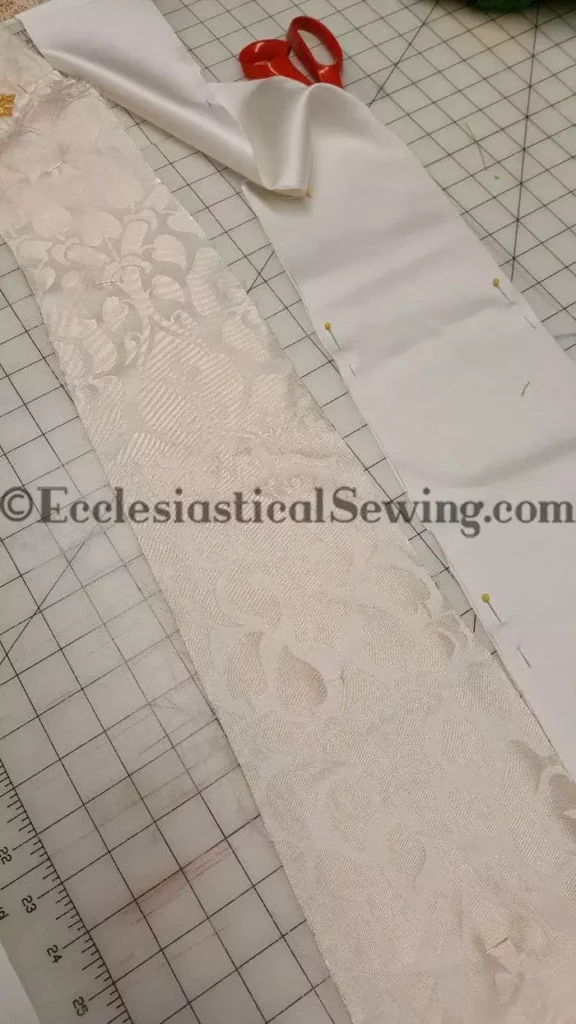
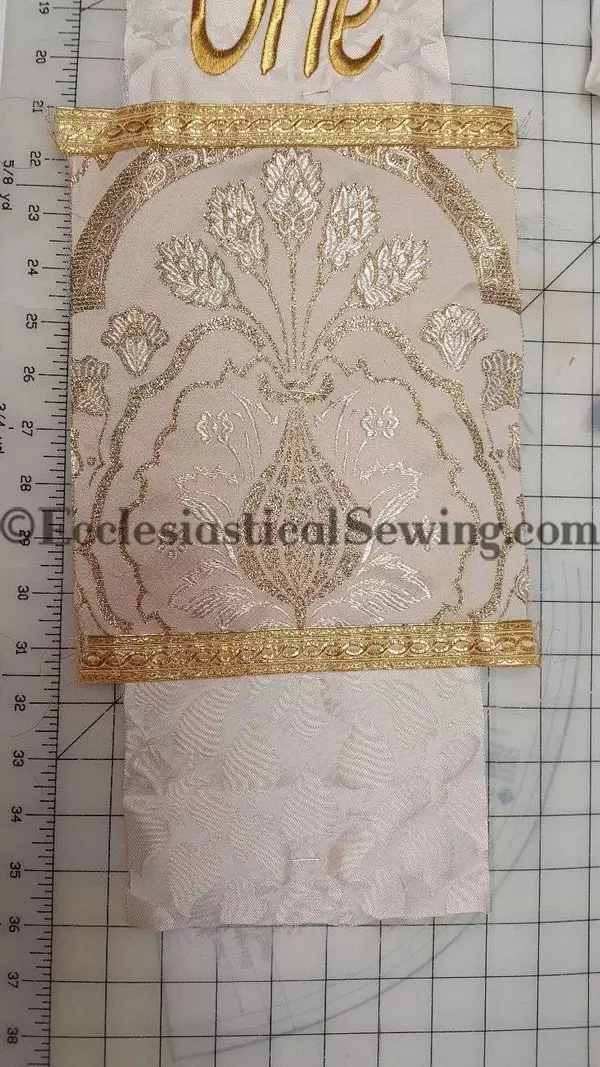
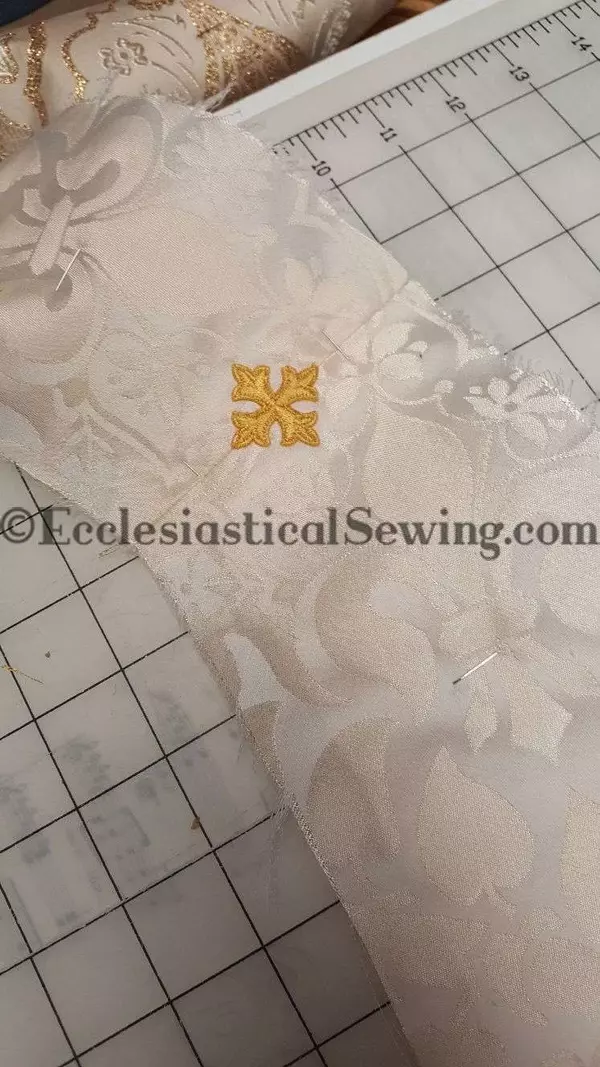
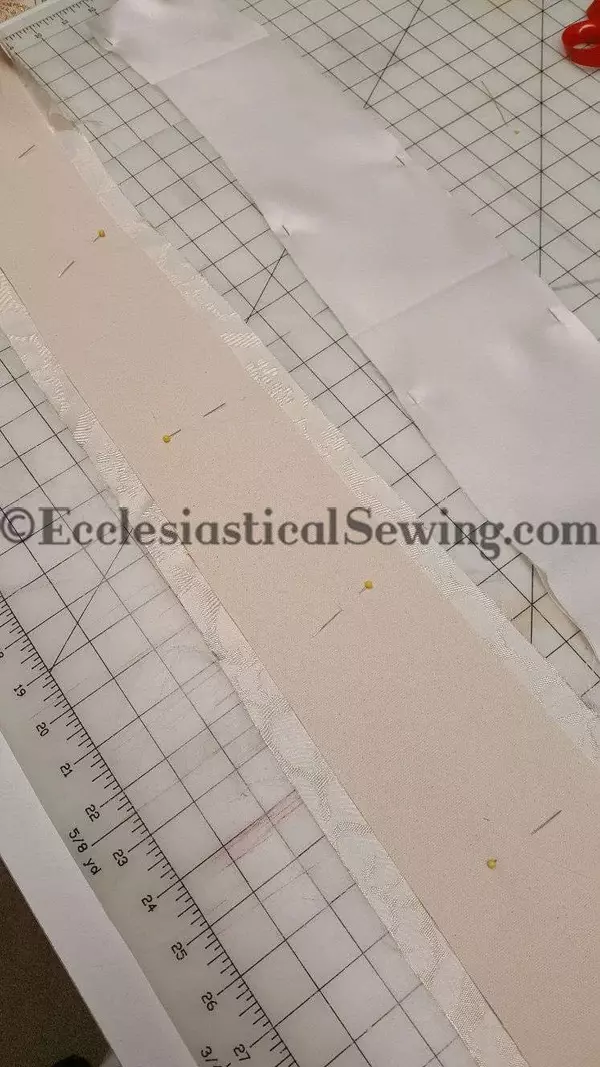
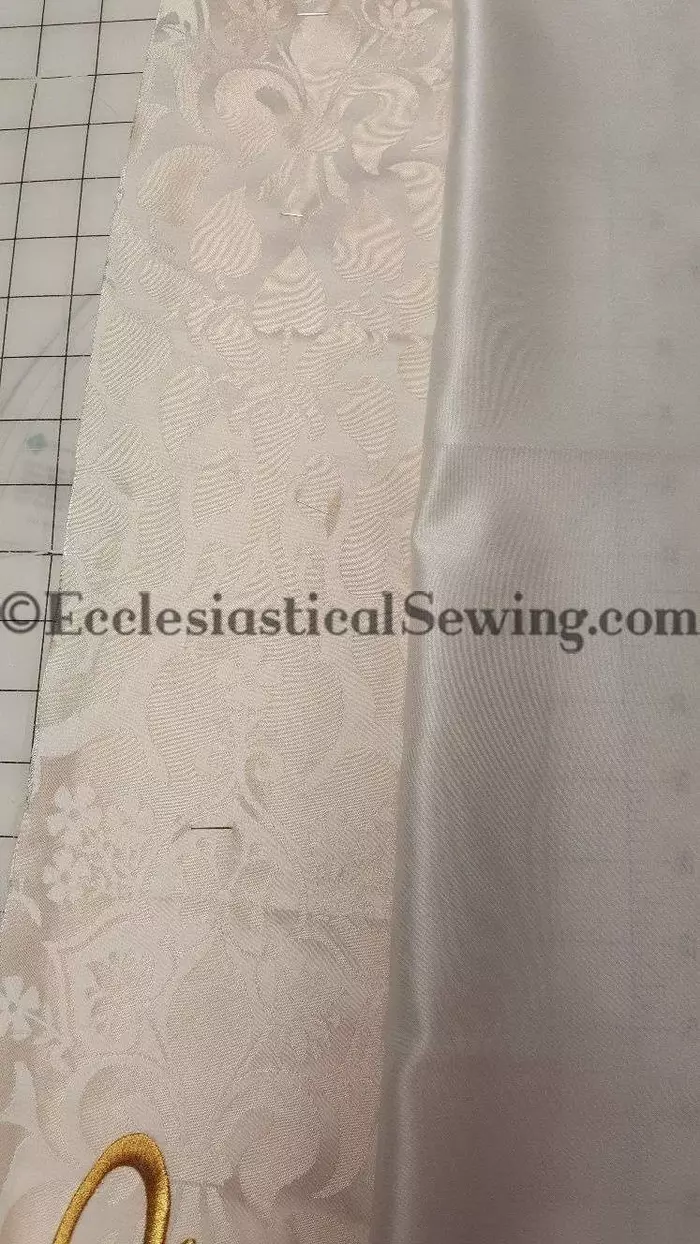
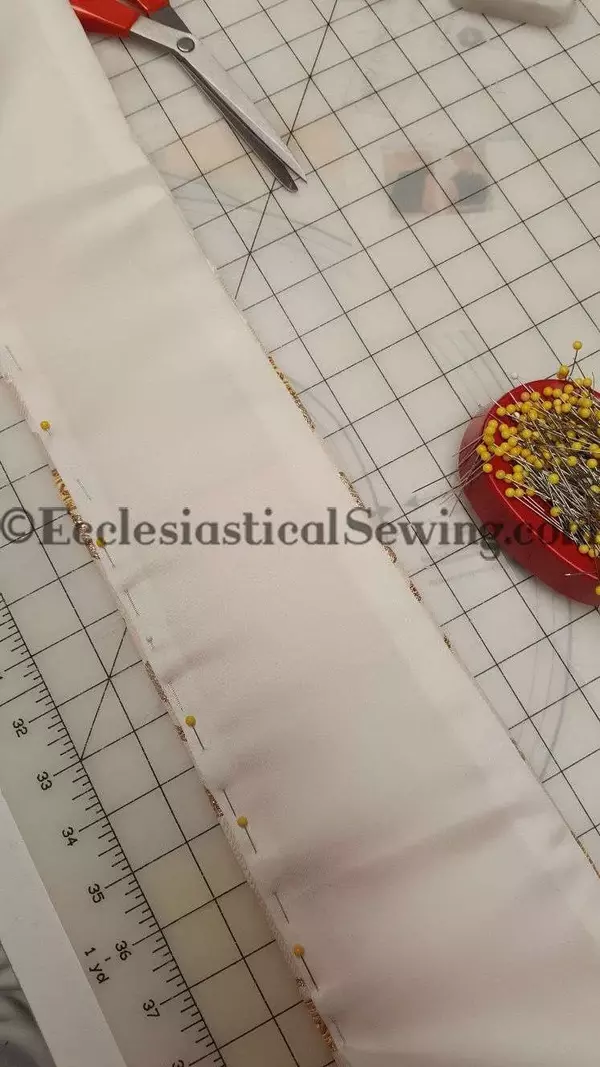

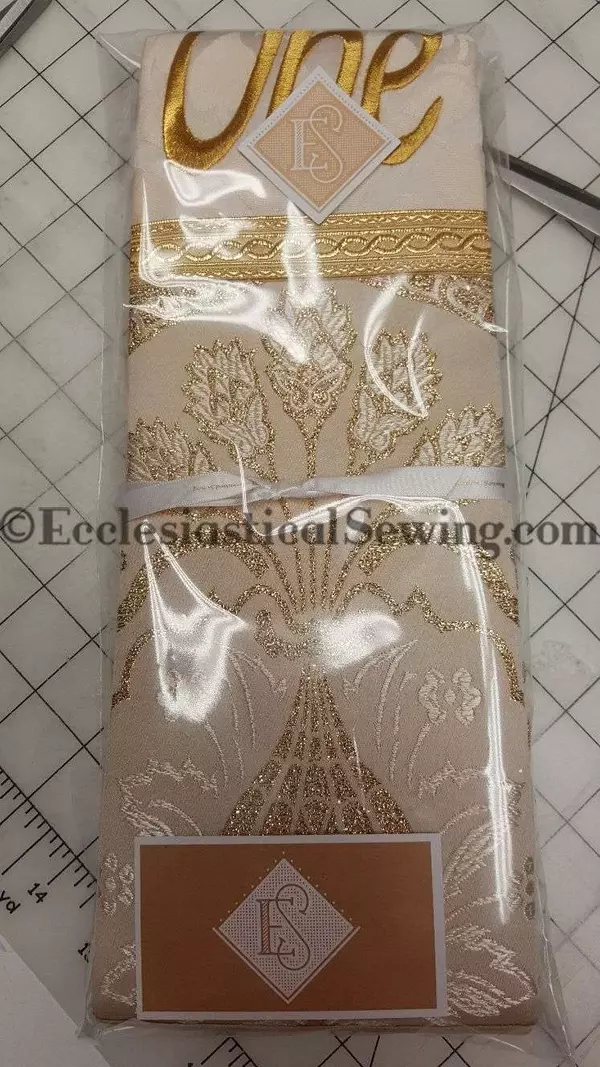





 RSS - Posts
RSS - Posts
The dining room table is covered with the goods…the velveteen goes to the embroiderer tomorrow!!! Will do a photo journal to document the progress. I told family and friends I would see them on the other side LOL!!!
Thank you for your help.
Joan Ellis
Joan,
Everything is going to turn out beautifully and I will be so excited to see it!
Best of luck.
Carrie
Gorgeous!
Thank you!